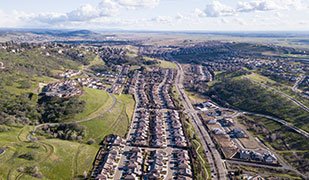Small Town and Rural Crime
Small town and rural crime novels are having a moment. If, as Raymond Chandler said, “Down these mean streets a man must go . . . ”, the mean streets we are seeing more and more of in modern crime fiction are the backroads of the south, the icy, pot-holed roads of the mid-western rust belt, or, in the case of my novel Del Rio (launching May 18, 2021), the dusty farm roads through California Central Valley orange groves.
Crime fiction used to be set in cities full of corrupt politicians, gangsters, and the decadent wealthy, but that’s changed. Crime writers have realized that rural settings are full of dangerous possibilities, all as ripe for the picking as the blackberries growing wild by the side of the road.
The economies of those towns have dried up, and drugs like meth and the gangs that sell it have taken them over, making them a perfect place to explore the fractures in our society. However, some crime writers have simply turned back to a tradition that has existed ever since Flannery O’Connor pulled back the curtain on rural, southern lives and wrote about them. Whatever the reason, these small-town, crime novels are fascinating.
Here’s something a crime writer said about small town, rural noir, crime novels that I love and think is so true:
Praise for the writing
“When you think about crime fiction one of the main places that comes up is the city and the dark alley in the rain . . . If you take that and you strip it down to nothing but a dirt road in the sunshine, it’s just as ominous in the daylight as it is in the night.” (Brian Panowich author of Bull Mountain)
I experienced how ominous rural settings can be when I first moved to the Central Valley of California. One afternoon, driving through a run-down farm town, one of the many that dot the landscape, I spotted a farm worker, walking by the side of the road, reading a letter, the pages in his hand whipping around in the hot wind. The sun was so bright and the dust so thick I imagined him squinting hard just to make out the words of a letter sent from across the border. From where? Michoacán? Oaxaca? Someplace that seemed very far away, no doubt, to the man reading it.
I felt an overwhelming sense of loneliness and danger, feelings which I tried to capture in Del Rio.
The farmworker was walking by an orange grove, the trees thick and practically impenetrable. I remembered thinking someone could get dragged in there, murdered and you wouldn’t find him for weeks. I mentioned that to a new friend, someone who had lived in the Central Valley her whole life. “Yup,” she said. “Happens all the time.”
Up until then when I’d thought of crime settings, I’d imagined places in East Oakland like where I used to teach. The high school’s neighborhood was so dangerous that I had to park my car behind concertina wire, walk down a sidewalk strewn with needles, and pass through a metal detector to get to my classroom.
Pretty scary, right?
Well, the Central Valley setting of my novel Del Rio is all that stripped down to a dirt road in the sunshine.
BLOG HIGHLIGHTS
-
This Year’s Passover Menu

In the past on Passover, I’ve served the traditional sweet and sour brisket and a variety of chicken dishes, including one from the Mexican Jewish cook Pati Jinich, which has tamarind, apricots and chipotle (superb!). But, this year the . . . READ MORE
-
Central Valley, CA population predictions

The Central Valley of California is experiencing a tremendous growth in its population. According to new data from the California’s Department of Finance, population predictions for the Central Valley indicate that the region’s population . . . READ MORE
